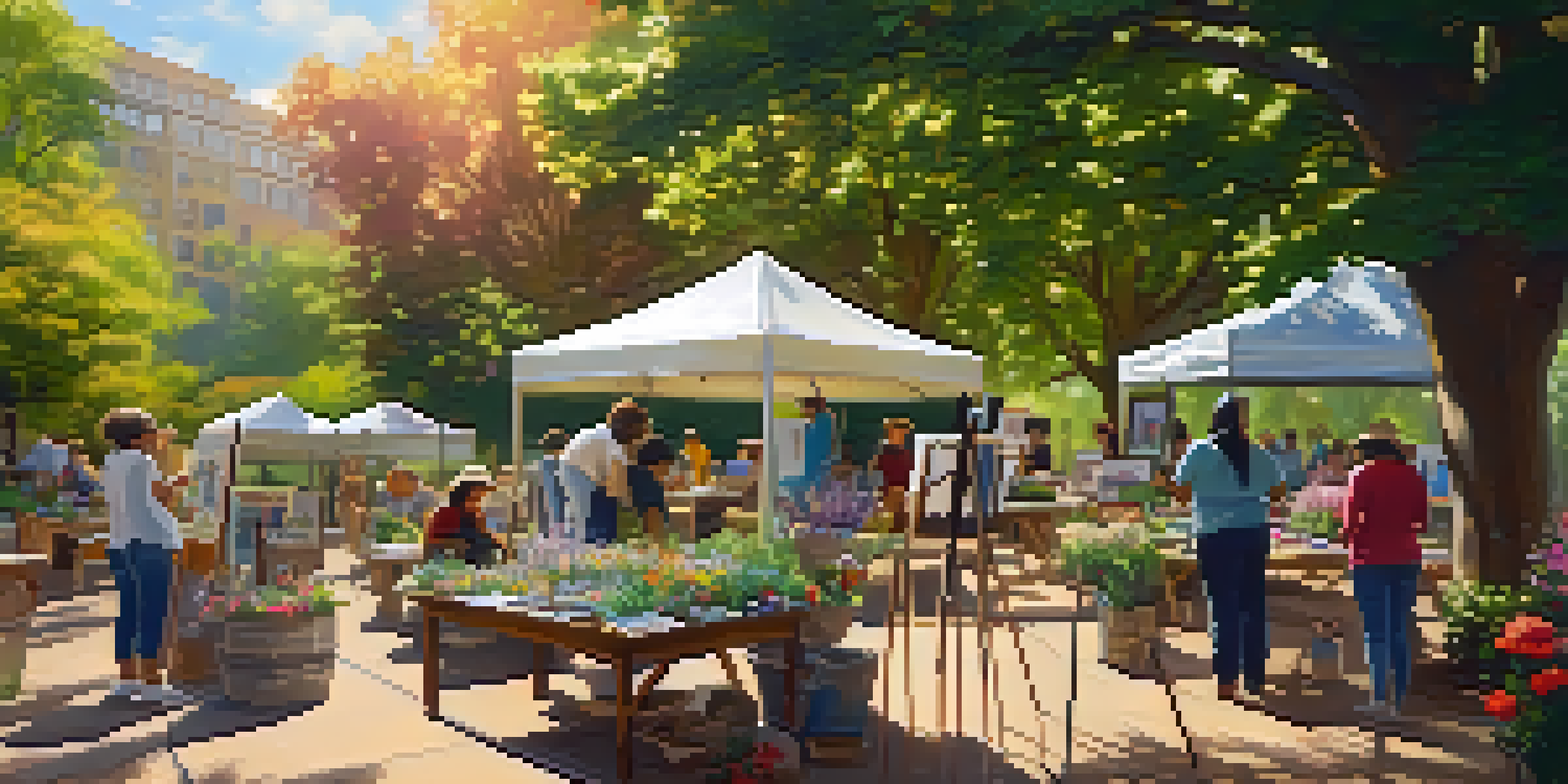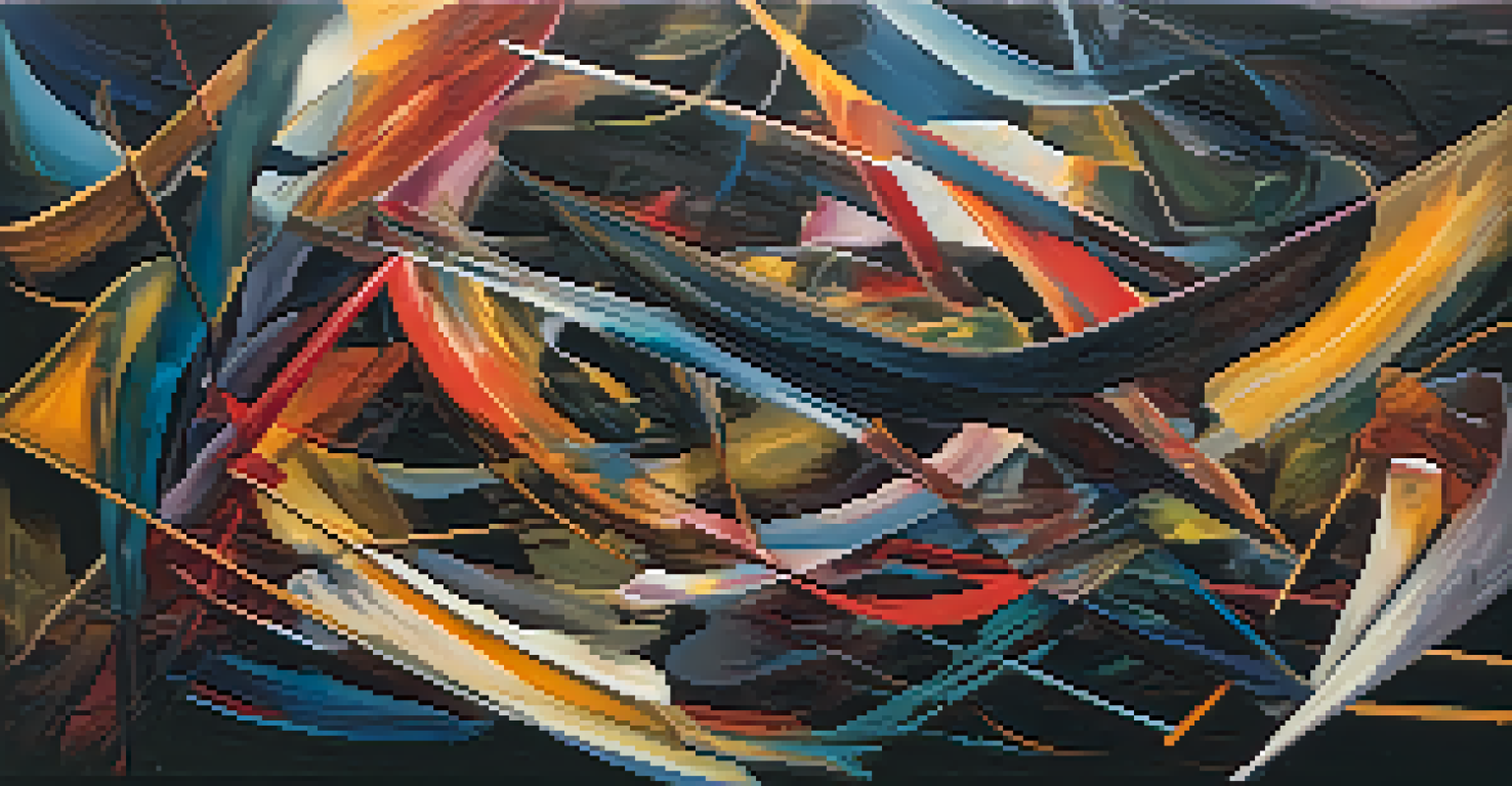Artistic Representations of Trauma: Memory and Healing

Understanding Trauma and Its Impact on Memory
Trauma can leave a lasting imprint on our memories, often distorting them. When we experience something traumatic, our brain may struggle to process the event, leading to fragmented recollections. This disconnection can create feelings of confusion and anxiety, making it difficult to move forward.
Art is the most beautiful of all lies; it is a mirror to our souls and our traumas.
Art provides a unique avenue to navigate these complex memories. Through creative expression, individuals can externalize their inner turmoil, allowing them to confront their feelings in a safe space. This process often helps in piecing together the fragmented parts of their trauma.
By transforming pain into something tangible, art can facilitate understanding and acceptance. It encourages individuals to reflect on their experiences, promoting a sense of agency over their narrative and paving the way for healing.
The Role of Artistic Expression in Healing
Artistic expression can be a powerful tool in the healing journey. Engaging in creative activities, whether it’s painting, writing, or music, allows individuals to release pent-up emotions. This release can lead to catharsis, where the act of creating becomes a form of therapy.

For many, the act of creating art serves as a bridge between their inner world and external reality. It provides a means to communicate feelings that might be too difficult to articulate verbally. Through art, individuals can share their stories, fostering connection and empathy with others who may have similar experiences.
Art Helps Process Trauma
Creative expression through art allows individuals to confront and piece together their fragmented memories of trauma.
Moreover, engaging in art can also help build resilience. As individuals navigate their trauma through creativity, they often discover newfound strengths and coping mechanisms, which can empower them in other areas of their lives.
Visual Art: A Canvas for Trauma Narratives
Visual art, such as painting and sculpture, has long been used to express trauma. Artists often channel their pain into their work, creating pieces that resonate with their experiences. These artworks can evoke profound emotional responses, allowing viewers to connect with the artist’s narrative on a personal level.
Music can change the world because it can change people.
For instance, an artist might depict a traumatic event through abstract shapes and colors, capturing the chaos and confusion they felt. This not only serves as a form of personal expression but also invites others to reflect on their own experiences with trauma.
Exhibitions that focus on trauma can also foster community healing. When individuals come together to share their stories through visual art, it creates a supportive environment where healing can thrive.
The Power of Music in Processing Trauma
Music holds a unique power to convey emotions that often elude words. For many, listening to or creating music can serve as a form of solace in times of distress. The melodies and lyrics can act as a balm, helping individuals process their feelings and experiences.
Songs that resonate with one’s trauma can provide validation and understanding. Artists often share their personal struggles through their lyrics, creating a sense of connection with listeners who may feel isolated in their pain.
Community Art Fosters Healing
Engaging in collaborative art projects creates supportive environments that promote collective healing and connection.
Moreover, music therapy is increasingly recognized as an effective therapeutic approach. By engaging with music, individuals can explore their emotions and memories in a safe environment, facilitating healing and self-discovery.
Dance as a Physical Expression of Trauma
Dance offers a physical outlet for expressing emotions tied to trauma. Movement can bypass verbal communication, allowing individuals to convey feelings that may be too painful to articulate. This kinesthetic expression can be liberating and therapeutic.
Many find that dance helps them reconnect with their bodies, especially after experiences that may have caused disconnection. Through dance, individuals can reclaim their physical autonomy and express their journey of healing.
Additionally, dance therapy has emerged as a powerful method for processing trauma. By engaging in guided movement, participants can explore their emotions and experiences, ultimately finding empowerment through their bodies.
Writing as a Tool for Reflection and Healing
Writing can be a profound way to explore trauma and its effects on our lives. Journaling allows individuals to articulate their thoughts and feelings, providing clarity and insight into their experiences. This reflective practice can be a crucial step in the healing process.
Through narrative writing, individuals can reconstruct their trauma stories in a way that feels more manageable. This process of storytelling can help in making sense of chaotic memories, allowing for a sense of closure and understanding.
Music as Emotional Solace
Music provides a powerful outlet for processing emotions associated with trauma, offering comfort and validation.
Moreover, sharing written stories, whether through blogs, poetry, or books, can foster community. When people open up about their experiences, it creates a space for others to share their own, facilitating collective healing.
The Intersection of Art and Community in Healing
Art has a remarkable ability to bring people together, especially in the context of trauma. Community art projects and workshops can create safe spaces for individuals to express their shared experiences. These collaborative efforts can foster a sense of belonging and understanding.
When communities engage in artistic endeavors, they often find collective healing. Creating art together can build connections and solidarity, reminding individuals that they are not alone in their struggles.

Furthermore, community exhibitions can provide a platform for voices that are often marginalized. By showcasing diverse stories through art, these initiatives can spark conversations about trauma and healing, promoting awareness and empathy.